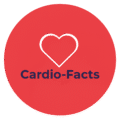Understanding Atrial Fibrillation (AFib)
Atrial fibrillation — often called AFib — is the most common type of irregular heartbeat (arrhythmia). In AFib, the upper chambers of the heart (the atria) beat chaotically and out of sync with the lower chambers (the ventricles). This irregular rhythm can lead to reduced blood flow, heart strain, and a higher risk of complications such as stroke.
AFib can occur occasionally (paroxysmal), persistently, or become permanent. While some people may not notice symptoms, the condition is far from harmless.
Common Symptoms of AFib
Not everyone with AFib feels the same signs, but the most frequent include:
- Irregular heartbeat or palpitations (heart racing, fluttering, or skipping beats)
- Fatigue and reduced exercise tolerance
- Shortness of breath
- Chest discomfort or tightness
- Dizziness or lightheadedness
⚠️ Some people may not feel any symptoms — “silent AFib” — which is why routine check-ups and early detection are so important.
Why AFib Matters: The Health Risks
AFib is not just an inconvenience; it can lead to serious health issues if untreated:
- Stroke: AFib increases stroke risk about five-fold because blood can pool and form clots in the atria.
- Heart failure: The irregular rhythm can weaken the heart muscle over time.
- Cognitive decline: Studies suggest a link between AFib and a higher risk of dementia.
- Reduced quality of life: Ongoing fatigue and breathlessness can affect daily activities.
Who Is at Risk for AFib?
Several factors increase the likelihood of developing AFib, including:
- High blood pressure (hypertension)
- Coronary artery disease and prior heart attack
- Valvular heart disease
- Diabetes and obesity
- Sleep apnea
- Excess alcohol use (“holiday heart syndrome”)
- Age over 65
Lifestyle Tips for AFib Prevention
While not all cases of AFib can be prevented, adopting heart-healthy habits significantly lowers risk:
- 🥗 Eat a Mediterranean-style diet rich in vegetables, fruits, whole grains, and healthy fats
- 🚶 Stay active with regular aerobic and strength exercises
- 🧘 Manage stress through relaxation techniques like yoga or meditation
- 💤 Prioritize sleep and address sleep apnea if present
- 🍷 Limit alcohol and avoid binge drinking
- 🧂 Control blood pressure and cholesterol through diet and medication if prescribed
Smart Devices and AFib Detection
Technology is rapidly changing how we monitor our hearts. Wearable devices like smartwatches and dedicated health apps can now detect signs of an irregular heartbeat, sometimes even alerting users to a possible atrial fibrillation episode before they notice any symptoms. While these tools cannot replace a medical diagnosis, they can support early detection and prompt medical evaluation.
👉 In my article 🧠 Top 5 AI-Powered Heart Health Apps in 2025, I explore how artificial intelligence and smart devices are being used to track heart rhythm, the current evidence behind their accuracy, and the future role of digital health in cardiovascular prevention.
When to See a Doctor
If you experience a sudden irregular heartbeat, chest pain, fainting, or shortness of breath, seek medical attention immediately. Even in the absence of symptoms, regular check-ups can help detect AFib early and reduce complications.
Key Takeaway
Atrial fibrillation is common, but not benign. Recognizing the symptoms and understanding the risks can make the difference between living well and facing severe complications like stroke or heart failure. With proper treatment and lifestyle changes, people with AFib can lead full and active lives.
👉 Stay informed, protect your heart, and don’t ignore the signs of an irregular heartbeat.
📚 References
- Ko D, Biviano AB, Sattar A, Zimetbaum PJ, Kamel H, Elkind MSV. Atrial Fibrillation: A Review. JAMA. 2024;332(2):158-170. doi:10.1001/jama.2024.22451. https://pubmed.ncbi.nlm.nih.gov/39680399/
- Joglar JA, et al. 2023 ACC/AHA/ACCP/HRS Guideline for the Diagnosis and Management of Atrial Fibrillation. Circulation. 2023;148:e93-e469. doi:10.1161/CIR.0000000000001193. https://www.ahajournals.org/doi/10.1161/CIR.0000000000001193
- Brandes A, Smit MD, Nguyen BO, Rienstra M, Van Gelder IC. Risk Factor Management in Atrial Fibrillation. Arrhythm Electrophysiol Rev. 2018;7(2):118-127. doi:10.15420/aer.2018.24.2. https://pmc.ncbi.nlm.nih.gov/articles/PMC6020195/
- Charitos EI, Pürerfellner H, Glotzer TV, Ziegler PD. Atrial fibrillation. Nat Rev Dis Primers. 2022;8:21. doi:10.1038/s41572-022-00347-9. https://www.nature.com/articles/s41572-022-00347-9
- Marinheiro R, Parreira L, Amador P, Santos N, Teixeira R, Gonçalves L. Risk Stratification in Atrial Fibrillation Patients: A Review Focused on Mortality. Arrhythm Electrophysiol Rev. 2021;10(2):89-96. doi:10.15420/aer.2020.37. https://www.aerjournal.com/articles/risk-stratification-atrial-fibrillation-patients-review-focused-mortality
- Elsheikh S, et al. Atrial Fibrillation and Stroke: State-of-the-Art and Future Perspectives. Prog Cardiovasc Dis. 2024;79:1-11. doi:10.1016/j.pcad.2023.10.004. https://www.sciencedirect.com/science/article/pii/S0146280623005984
💙 Take charge of your heart health!
Subscribe to our free newsletter for expert tips and get your complimentary guide “7 Proven Tips to Protect Your Heart After 40.”
👉 Join now
⚠️ Disclaimer: The content on Cardio-Facts is for informational and educational purposes only and does not constitute medical advice. Always consult a qualified healthcare professional regarding your health. Read our full disclaimer and legal policies.
